Hungary's First Comprehensive Manga Event: Getting to know the cultural background, drawing the pictures, and learning unique expressions from "manga Japanese"
Eszter Hamos
The Japan Foundation, Budapest
As is well known, the late 1990s saw Japanese pop culture such as manga and anime rapidly spread around the world and become highly acclaimed as part of Japanese culture. Now, many cartoons in the style of Japanese manga are being produced worldwide, and they are proving to be extremely popular.
In March 2012, the Japan Foundation and Kyoto Seika University, which has been at the forefront of Japan's manga education, co-hosted a three-part event at one of the Japan Foundation's overseas offices in Budapest, Hungary, comprising a culture lecture, manga workshop, and Japanese language lesson under the theme of "Japan and Manga."
The project kicked off on March 6 with a culture lecture entitled "The Japanese manga culture behind the manga boom," with Keiko Takemiya, a celebrated author of manga for girls and head of the Faculty of Manga at Kyoto Seika University, and Kazuma Yoshimura, Director of the International Manga Research Center and Associate Professor of the Faculty of Manga at Kyoto Seika University.
Yoshimura first talked about Japanese manga magazines, illustrating his theme with data and information, and presenting analyses of the material from various angles, to provide fresh insights into manga and the publishing industry. It made the audience realize that the key to understanding manga lies not only in reading the works produced by the authors, but also in learning the current state of the industry and how to use data and material to your advantage.
Then, Takemiya followed with her presentation "45 Years with Manga," showing her original manga work on a screen and explaining how girls' manga has become popular in Japan and how her style of drawing has changed over the years to focus more on drawing boys. Besides giving a behind-the-scenes glimpse of manga production, she also talked about the creative side of manga as an author. An enthusiastic crowd of some 150 people gathered at the modern art museum where the event was held, and the lecture ended successfully with a lively Q&A session.
In addition, a Genga' (Dash) exhibition was also held at the lecture venue, showing the works of 14 top Japanese manga authors of the girl manga genre including Takemiya. Genga' (Dash) is a project that involves creating sophisticated reproductions by scanning the original artwork and adjusting the coloring and texture to bring them as close to the original as possible. Taking advantage of the characteristics of manga as a form of print culture, Takemiya came up with this idea as a way to expose more people to original artwork, where they can see even the brush strokes, and the Kyoto International Manga Museum is now collecting and studying this Genga' (Dash) work.
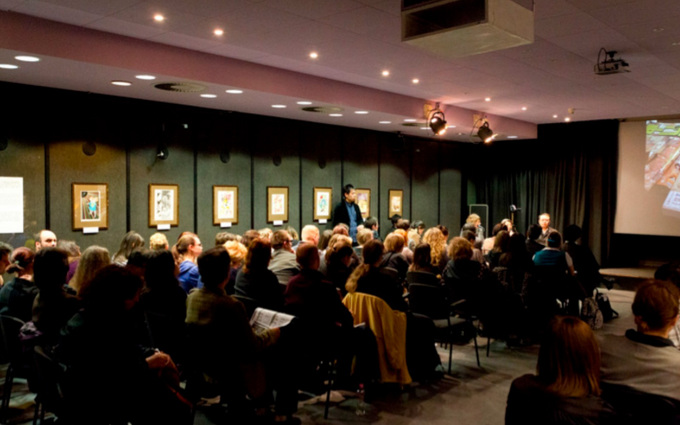
The culture lecture "Japanese manga culture behind the manga boom" drew a crowd of 150
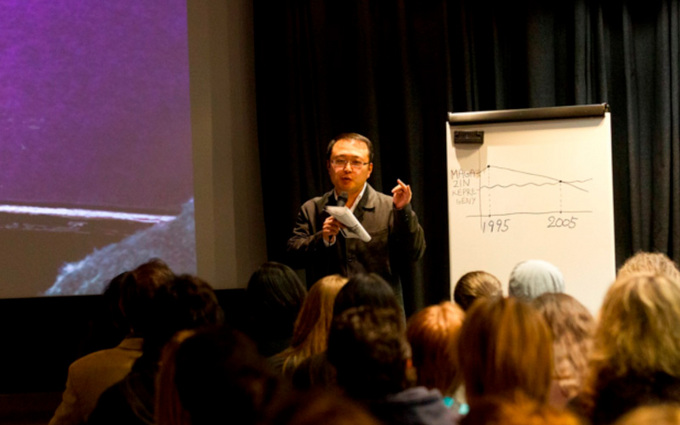
Kazuma Yoshimura, Director of Kyoto Seika University International Manga Research Center, presents analyses of manga and the publishing industry based on a wealth of data
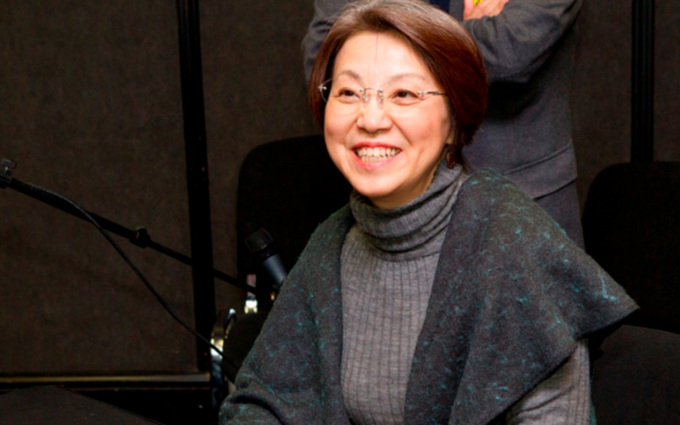
Keiko Takemiya, distinguished author of manga for girls and Dean of the Faculty of Manga at Kyoto Seika University, was surrounded by fans after the lecture
A three-day manga workshop was also held in connection with the culture lecture. Participants selected previously from some 100 applicants including artists of various ages spanning from 16 to 41 gathered for this workshop from Budapest and all over Hungary. The workshop taught the basics of how to draw Japanese manga characters, beginning with an introduction of the various special tools, followed by an explanation of the process of character design. Then, after listening to a step-by-step account of how to draw characters, looking in detail at each body part, and watching a demonstration by lecturers from the Kyoto Seika University International Manga Research Center, the participants got to try their own hand at drawing expressive characters on paper. As well as having fun making their own manga, the workshop seemed to allow them to discover their creativity and originality through manga drawing.
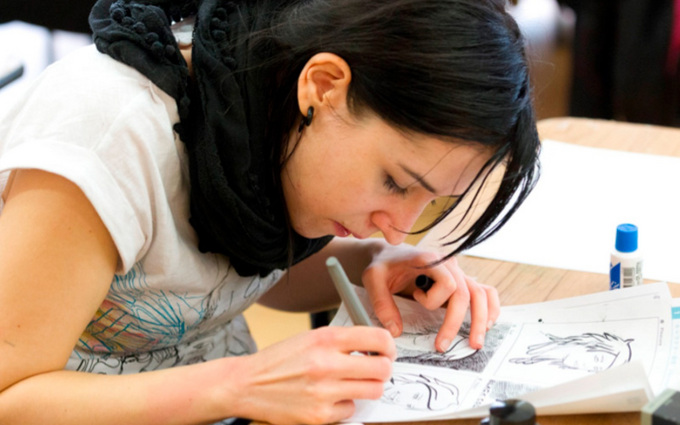
A participant concentrating on drawing characters at the manga workshop
The series of manga events concluded on March 9 with a Japanese language lesson "Let's learn manga Japanese!" at the Japan Foundation, Budapest, which provided an opportunity to learn onomatopoeic words and phrases and the characteristics of dialog in manga. The participants, who were already familiar with manga, furthered their understanding of unique manga expressions through the Japan Foundation's Japanese in Anime & Manga website and other materials, and were delighted at the chance to act the parts of boy, rich girl, samurai, and Osaka native, and to try on the unique speech patterns of each of the characters.
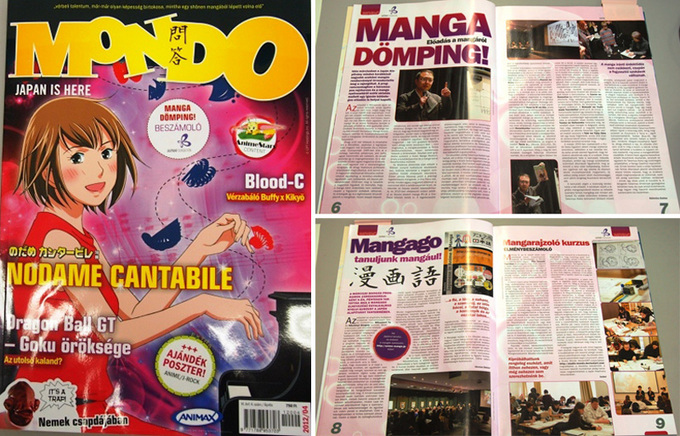
Featured in a Hungarian magazine
(Original text in Japanese.)
Related Events
Back Issues
- 2024.5.24 The 50th Japan Found…
- 2024.3. 4 Movie Theaters aroun…
- 2023.4.10 The 49th Japan Found…
- 2023.3.28 JF's Initiatives for…
- 2023.1.27 Living Together with…
- 2022.11.16 Inner Diversity <…
- 2022.6.21 The 48th Japan Found…
- 2022.3.22 JF's Initiatives for…
- 2022.3.14 JF's Initiatives for…
- 2022.2.14 JF's Initiatives for…

